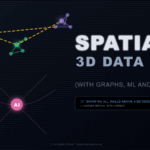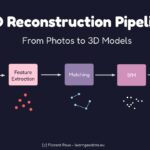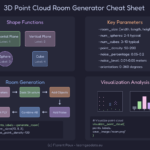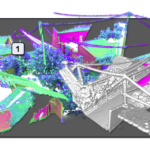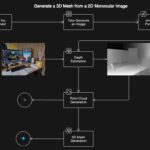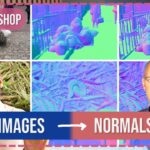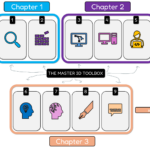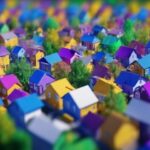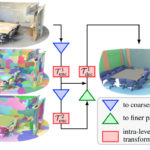The 3D Data Science Hub Resources
Welcome to the 3D Data Science Hub 🐦🔥
Four years ago, I spent countless late nights piecing together information from dozens of scattered sources, just trying to figure out how to properly filter a point cloud. Today, I’m building that resource I wish existed back then.
This hub contains everything I’ve learned working hands-on with 3D data across industries – from mapping underground mines to helping robots identify objects. No academic jargon, no unnecessary theory – just practical techniques that actually work in the real world.
Here’s how to get the most out of this resource:
- Latest Releases: I add new tutorials weekly based on reader questions and problems I’ve recently solved in my own projects. Start here for cutting-edge techniques.
- 3D Reconstruction: If you’re looking to create 3D models from images or sensor data, this section walks you through the entire pipeline from capture to optimization.
- 3D Processing and Algorithms: The foundation of all 3D work. Learn exactly how to clean, filter, register and segment your data with code that’s optimized to handle massive datasets.
- 3D Machine Learning and AI: Ready to add intelligence to your 3D pipeline? These tutorials break down complex deep learning approaches into implementable steps with real-world examples.
Each tutorial includes complete code samples, parameter recommendations, and common pitfalls to avoid – all based on solutions I’ve personally implemented and tested.
Have a specific challenge? Drop me a note, and I might feature the solution in next week’s release.
🎼 Note: This tutorial is offered to you as part of my goal to open 99% of my work. To support this vision while joining the top 1% of 3D Experts, you can pick a course program to specialize in 3D Reconstruction, 3D Data Processing, or 3D Deep Learning.
Have a great read 📜
Latest Releases
I just pushed new tutorials every month based on questions you’ve been asking me. Each tutorial may include the full code and parameter settings you can adapt to your specific requirements.
Towards 3D Reconstruction
I remember my first attempt at 3D reconstruction – hours of capturing images only to end up with a messy, half-formed model.
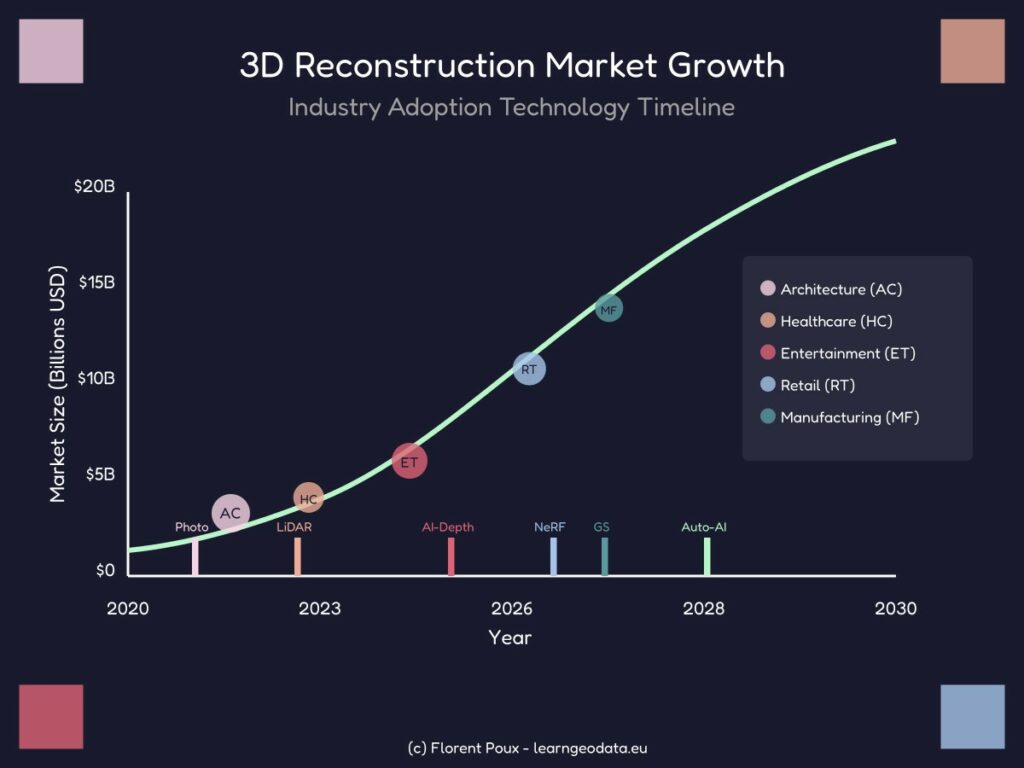
After years of trial and error, I’ve distilled what actually works. These tutorials skip the theory overload and show you exactly how to capture real-world objects and transform them into clean digital models. Whether you’re starting from scratch or trying to improve your existing workflow, you’ll learn the practical techniques I use daily to create professional-quality 3D assets from ordinary photos.
3D Reconstruction Tutorials
Get the Complete Operating System Course
3D Reconstructor OS is your perfect companion, transforming the complex theory of multi-view geometry into practical skills for building high-quality 3D models from images and sensors.
3D Processing and Algorithms
Let’s be honest – processing raw 3D data is where most projects fall apart. I’ve watched brilliant engineers get stuck trying to handle noisy point clouds or optimize complex meshes. My approach? Break it down into simple, repeatable steps.
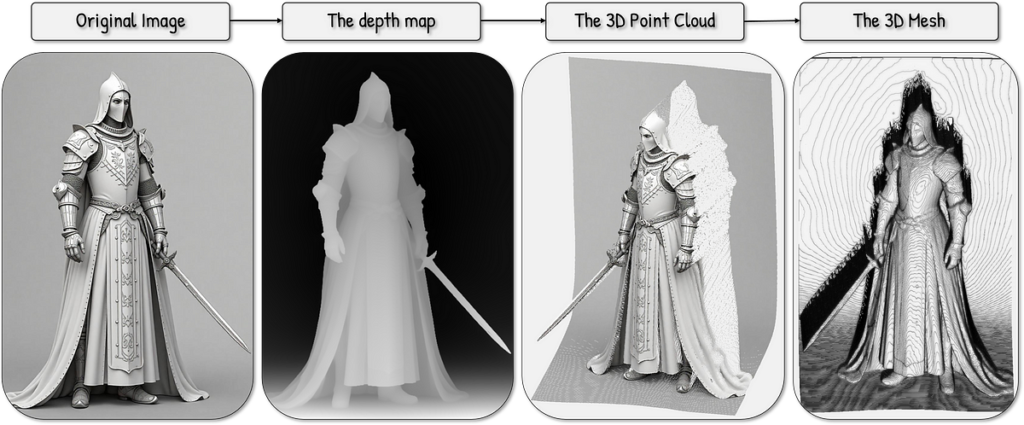
These tutorials focus on the 20% of algorithms that solve 80% of real-world problems. You’ll implement Python code that actually runs on large datasets and learn the exact parameters I use to filter, register, and segment 3D data efficiently.
3D Data Processing and Algorithms Tutorials
Get the Complete Operating System Course
3D Segmentor OS directly aligns with these challenges, teaching you production-tested techniques to partition, filter and analyze 3D data with unprecedented efficiency.
3D Machine Learning and AI
When I first applied deep learning to 3D data, I wasted months on architectures that looked impressive in research papers but failed on my projects. Through countless experiments, I’ve identified what truly works in production. These tutorials cut through the hype and show you how to build and train models that reliably understand 3D space. I’ll share the exact implementation details that transformed my work from interesting experiments to reliable solutions that deliver consistent results.
Get the Complete Operating System Course
3D Intelligence OS bridges the gap between theoretical AI concepts and practical 3D applications, showing exactly how to implement and train neural networks that understand spatial data.
3D Data Science Hub: FAQ
I built this hub as a central resource for practical 3D data science knowledge. It’s the collection of techniques, code samples, and solutions I’ve developed over years of working with 3D data across industries. No fluff, just what works.
Absolutely. While I don’t water down the technical content, each tutorial starts with fundamentals before diving deeper. I’ve structured everything assuming you know basic Python but might be new to 3D concepts.
I release new tutorials weekly, focusing on either reader questions or solutions to problems I’ve recently tackled in my professional work.
Most tutorials leverage Open3D, NumPy, and scikit-learn as the foundation. For visualization, I use PyVista, and for deep learning components, PyTorch with specialized 3D extensions. I always include full environment setup instructions.
For basic processing and algorithms, any decent laptop will work. For the deep learning tutorials, having access to a GPU will significantly speed things up, especially when working with larger datasets. I note hardware requirements at the beginning of each tutorial.
Yes! All code is provided under MIT license. Use it however you want in your projects. I only ask that if you find it valuable, share the hub with others who might benefit.
The best way is to post your specific question in the community forum (linked below each tutorial). I check it regularly, and often other practitioners with similar experiences will jump in with solutions.
The principles apply broadly, but parameters often need adjustment for different data types. In the “Customization” section of each tutorial, I explain which parameters to tune first and how different data characteristics affect them.
The hub expands on and complements the book’s content. While the book provides a structured curriculum from fundamentals to advanced topics, the hub offers more specialized techniques, cutting-edge approaches, and ongoing updates as the field evolves.
Not at all. Each tutorial stands on its own. That said, the book provides a more systematic foundation that makes the hub’s more advanced content easier to absorb.
3D Data Science Hub: Complimentary Resources
At the 3D Data Science Hub, I believe in standing on the shoulders of giants. These aren’t just random links I’ve collected—they’re the exact resources I turn to daily in my own work with 3D data. Each one has saved me countless hours of troubleshooting and experimentation. Whether you’re looking for comprehensive documentation on processing algorithms, cutting-edge research implementations, or high-quality datasets to test your methods, this curated collection represents the most valuable tools in the 3D data science ecosystem. I’ve personally vetted each resource for practical utility and included why it might be relevant to your specific projects. Bookmark these links—they’ll become indispensable as you apply the techniques from our tutorials to your own unique challenges.
| Resource | Description | Best For | Link |
|---|---|---|---|
| Open3D Documentation | Comprehensive library for 3D data processing with detailed API references and tutorials | Processing point clouds, meshes, and RGBD images | open3d.org |
| Point Cloud Library (PCL) | Extensive C++ library with Python bindings for point cloud processing | Industrial-grade point cloud operations | pointclouds.org |
| PyTorch3D | Deep learning library for 3D data with differentiable renderers | 3D deep learning research and applications | pytorch3d.org |
| COLMAP | Structure-from-Motion and Multi-View Stereo pipeline | Photogrammetric 3D reconstruction | colmap.github.io |
| OpenTopography | Repository of high-resolution topographic data and tools | Geospatial and terrain analysis | opentopography.org |
| Papers With Code (3D Vision) | Collection of state-of-the-art research papers with implementation code | Staying current with cutting-edge techniques | paperswithcode.com/task/3d-vision |
| ModelNet | Princeton’s benchmark dataset for 3D shape classification and retrieval | Training and benchmarking 3D models | modelnet.cs.princeton.edu |
| Stanford 3D Scanning Repository | Collection of high-quality 3D scans for research | Testing reconstruction and processing algorithms | graphics.stanford.edu/data/3Dscanrep |
| NeRF-Studio | Framework for Neural Radiance Fields research and applications | Novel view synthesis and neural rendering | nerf.studio |
| 3D Machine Learning Resources by Yuxuan | Curated list of papers, datasets, and code for 3D machine learning | Literature review and research guidance | github.com/timzhang642/3D-Machine-Learning |
Next Steps 👣
Open-Access Tutorials
You can continue learning standalone 3D skills through the library of 3D Tutorials
Latest Tutorials
- 3D Scene Graphs for Spatial AI with NetworkX and OpenUSD
- 3D Reconstruction Pipeline: Photo to Model Workflow Guide
- Synthetic Point Cloud Generation of Rooms: Complete 3D Python Tutorial
- 3D Generative AI: 11 Tools (Cloud) for 3D Model Generation
- 3D Gaussian Splatting: Hands-on Course for Beginners
Instant Access to Entire Learning Program (Recommended)
If you want to make sure you have everything, right away, this is my recommendation:
1. The 3D Master Bundle: 3D Reconstruction, Processing and AI Systems (Lifetime)
Cherry Pick a single aspect
If you want to make sure you have everything, right away, this is my recommendation (ordered):
1. Get the fundamental 3D training (3D Bootcamp)
1. 3D Reconstruction (Creator OS)

